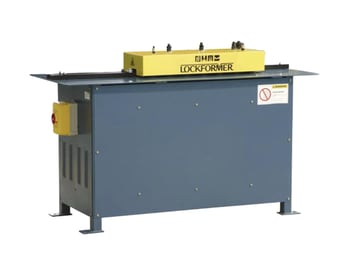In order to maximize efficiency and profitability, modern sheet metal contractors are paying more attention than ever to safety, raw material flow, and inventory management. With more competition to grapple with than in years past, contractors are trying to find a way to gain an edge when it comes to labor and the cost of manufacturing. While there is a wide variation in the ways contractors choose to organize the flow of their shop floor, there is also a common trend of consolidation that is growing in popularity among fittings fabricators and how they organize their shop flow.
Improving Shop Flow in Fittings Operations
 One area where many contractors are working to simplify and consolidate is the handling of fittings. If you start with 24 gauge sheet, it could be going in three, four different jobs. A laser or plasma machine is cutting out both parts from a Pittsburgh lock and a TDC/F machine. These parts go either to lining or a hand spray, and lining, and pinning station. The parts are then reassembled again by a few operators at a knock up table before they are shrink wrapped or film wrapped to a cage.
One area where many contractors are working to simplify and consolidate is the handling of fittings. If you start with 24 gauge sheet, it could be going in three, four different jobs. A laser or plasma machine is cutting out both parts from a Pittsburgh lock and a TDC/F machine. These parts go either to lining or a hand spray, and lining, and pinning station. The parts are then reassembled again by a few operators at a knock up table before they are shrink wrapped or film wrapped to a cage.
However, sorting these fitting parts is a problem that the industry largely haven't solved yet. Some shops have developed a sorting process for the lining side. When the liner is cut, they would then be put in vertical rolling tables to help sort the lining.
There are different philosophies as to whether or not a shop should maximize for reduced coil changes as they go from different gauges, or doing all of your installation at one time, versus focusing on one job so that you don’t have to split up a job into different pieces and then bring it all back together.
As a fittings contractor, labor and material costs both factor into these operational decisions. If two or three jobs can be input at once and the material optimized, then the contractor can save material as well as labor and costs, including the setup and any tooling changes that have to be made. By batching these jobs together, you are reducing how often you have to change tooling and reset your equipment.
This type of consolidation of jobs and inventory is growing as a trend in the fittings industry. By cutting out production variables and inventory, these contractors are able to create an atmosphere with less chance of risk or less chance of human error.

